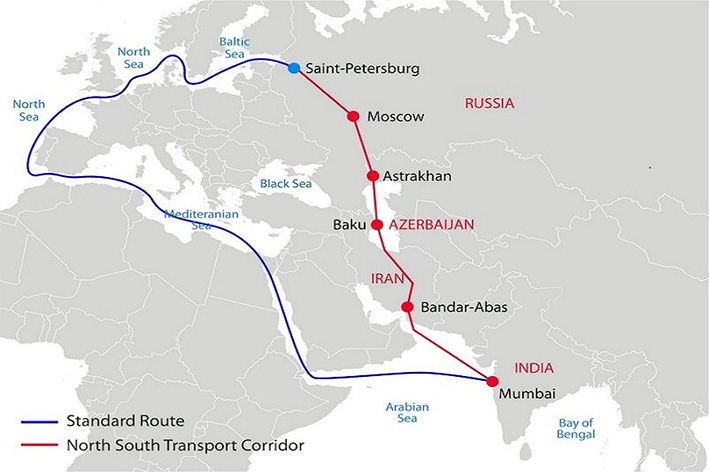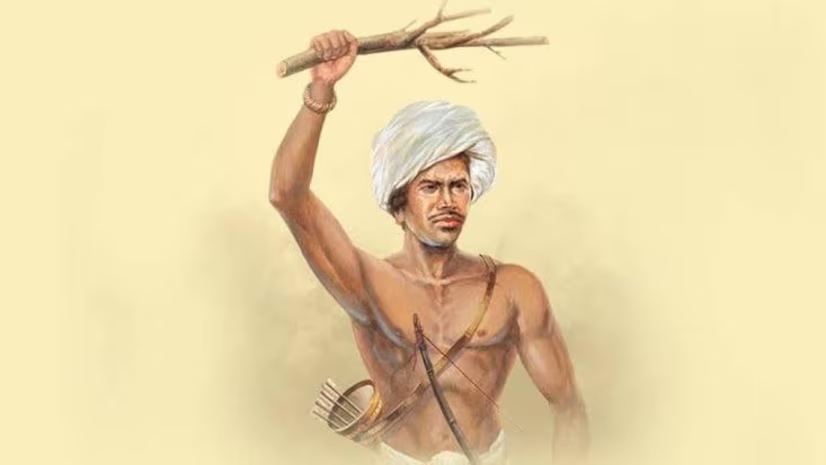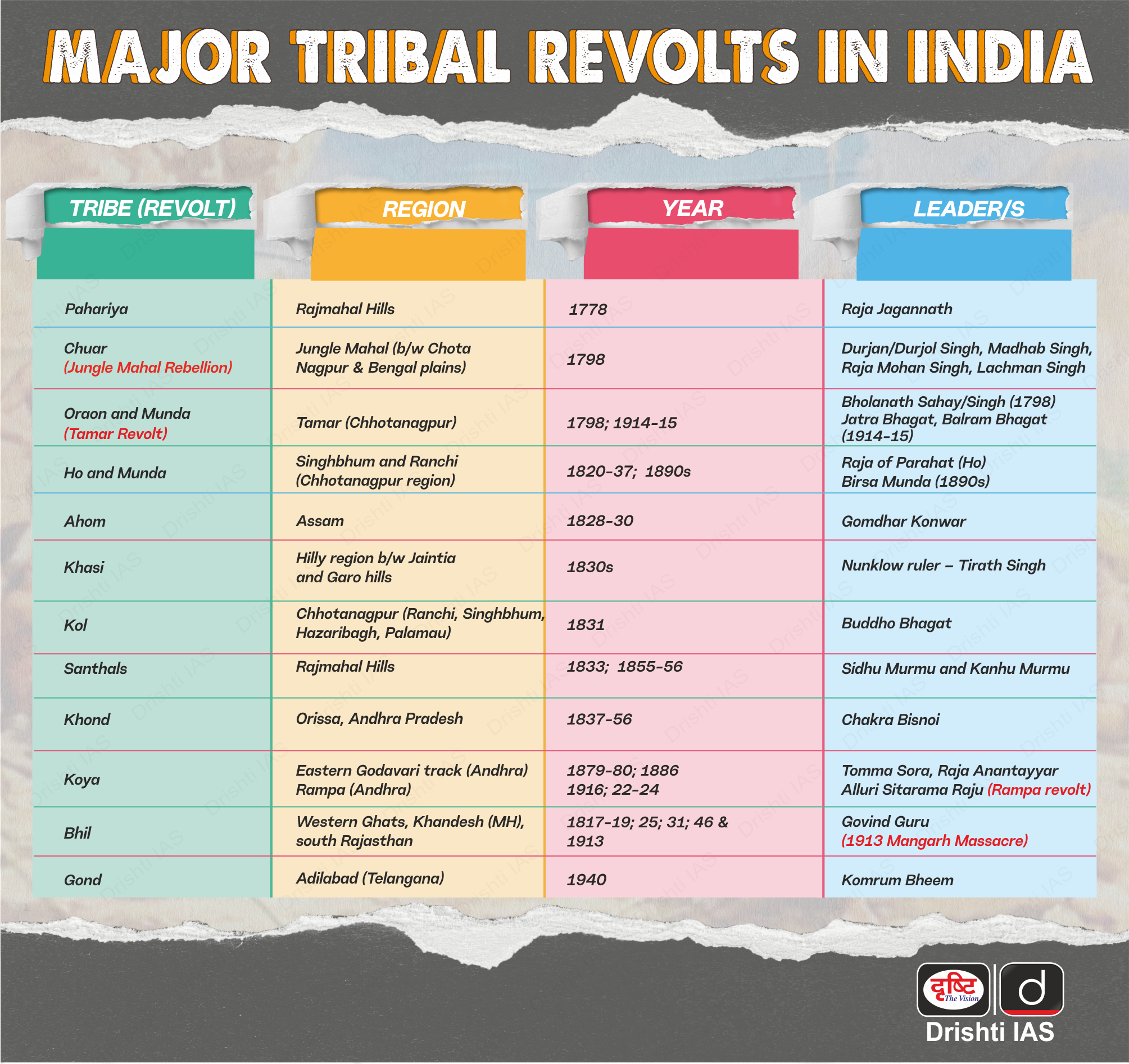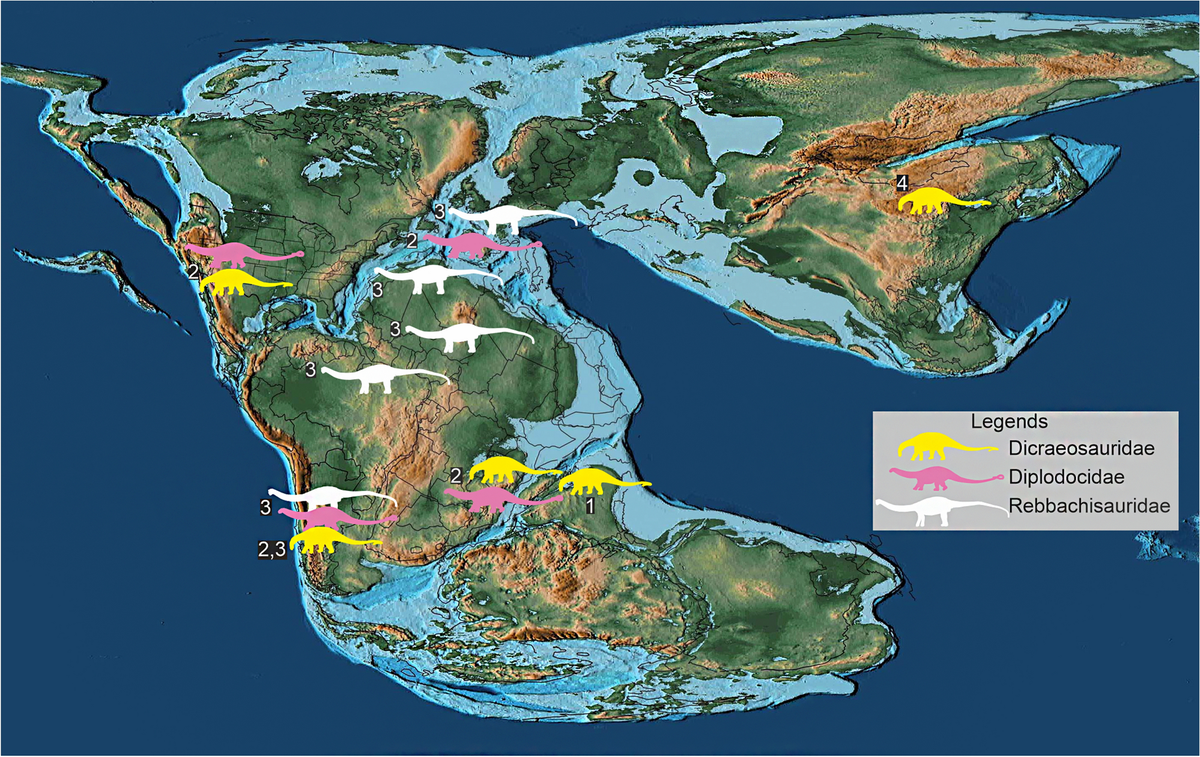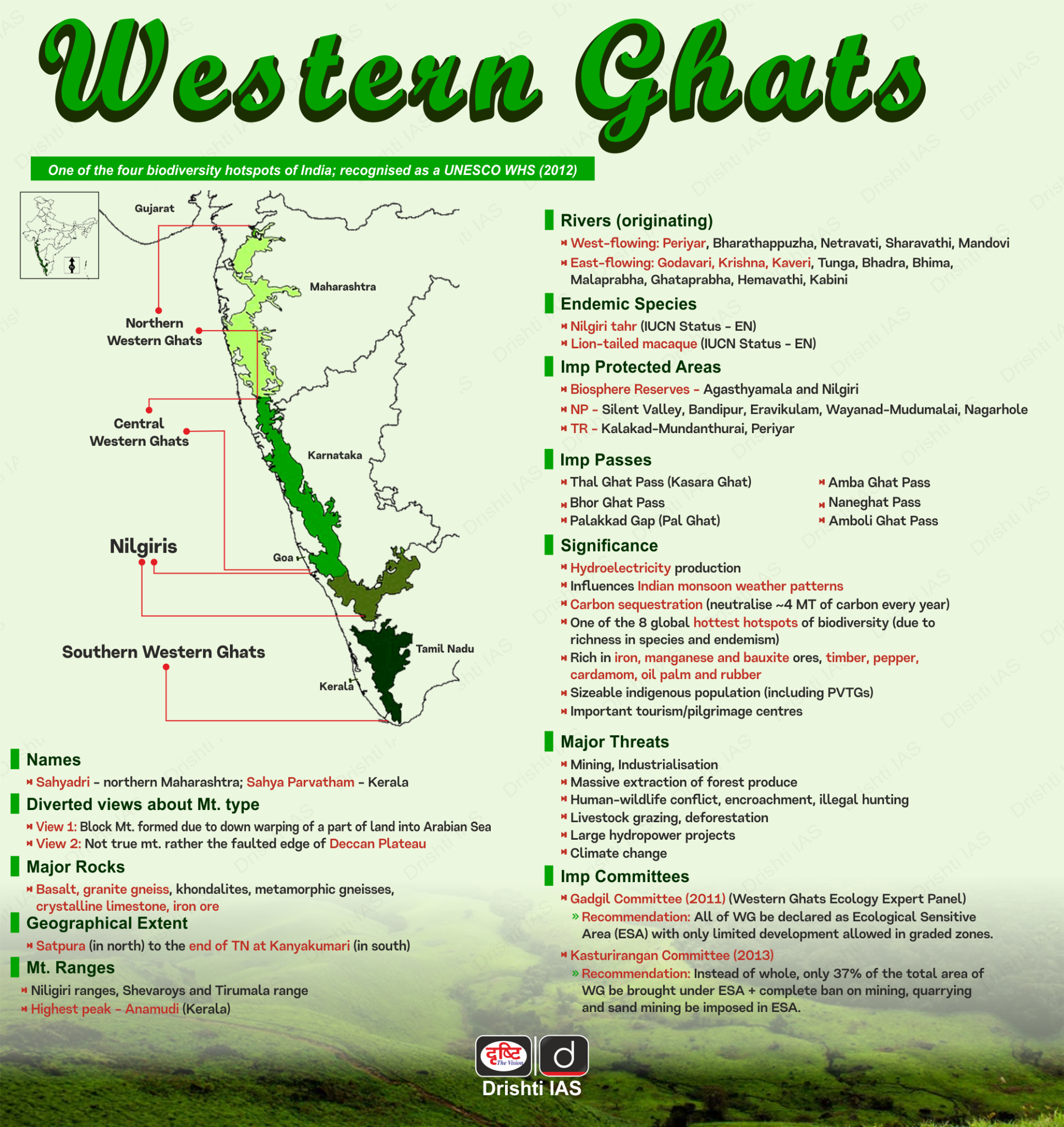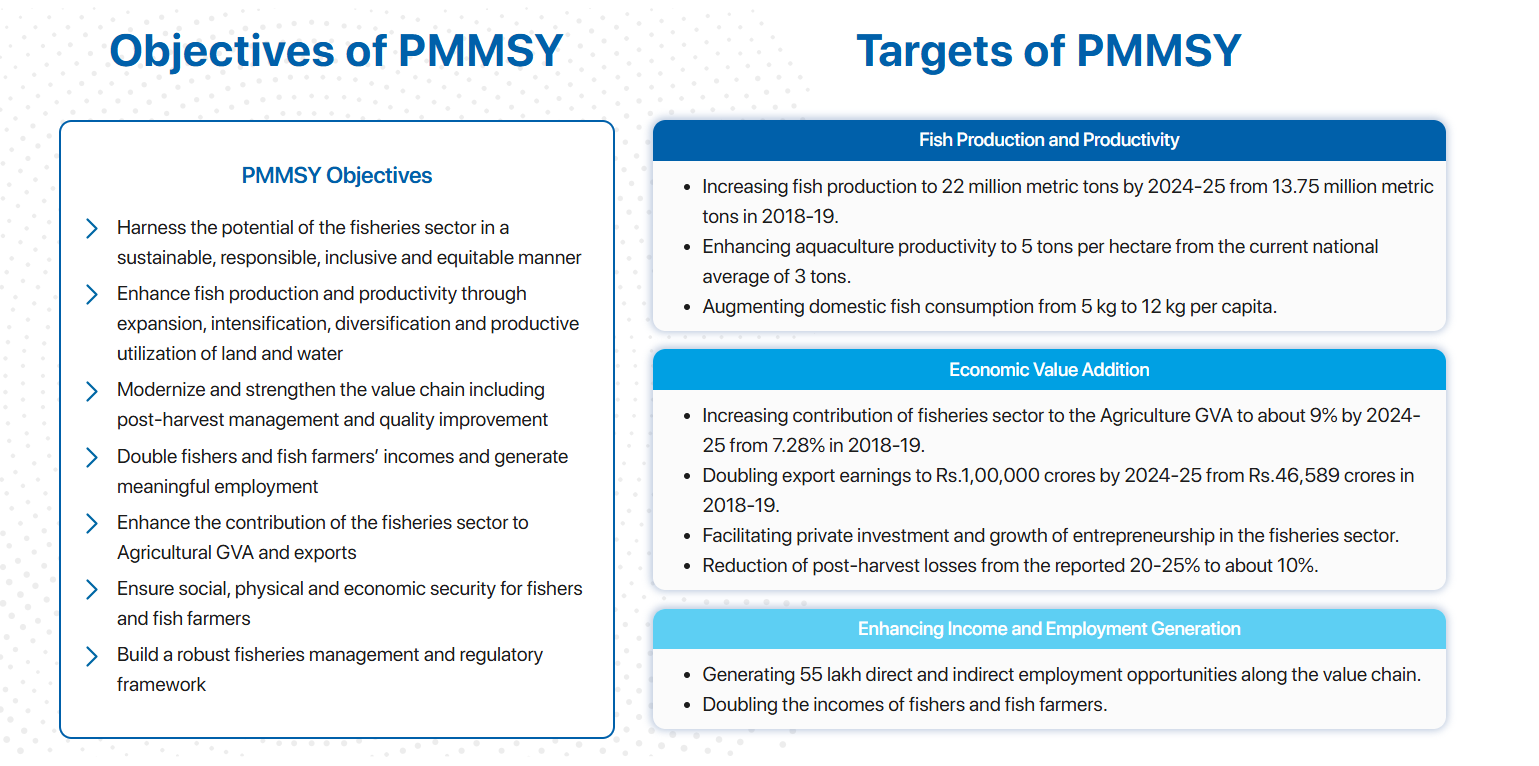International Relations
25th Session of the IRIGC-TEC
For Prelims: North-South Transport Corridor, Northern Sea Route, European Union, India-Middle East-Europe Corridor, Eurasian Economic Union, Vostro Account, Central Board of Indirect Taxes, Bilateral Investment Treaty
For Mains: Significance of India- Russia Relations, Economic Diplomacy and Strategic Partnerships, India’s Trade Imbalance
Why in News?
Recently, External Affairs Minister of India and Russia's First Deputy Prime Minister co-chaired the 25th session of the India-Russia Intergovernmental Commission on Trade, Economic, Scientific, Technological, and Cultural Cooperation (IRIGC-TEC) in New Delhi.
- The discussions highlighted significant progress in trade relations between the two nations and strategic cooperation in various sectors.
Note:
The The Inter-Governmental Commission (IGC) is a mechanism for regularly monitoring bilateral progress across the sectors of trade and economic cooperation between the two countries which was set up by an Agreement on inter-governmental Commission on Trade, Economic, Scientific and Technological Cooperation signed in 1992.
- It comprises 14 Working Groups and 6 Sub-Groups in diverse areas.
What are the Key Highlights of the 25th Session of IRIGC-TEC?
- USD 100 Billion Trade Target: India and Russia aim to achieve a USD 100 billion trade target ahead of the 2030, with both nations optimistic about reaching this goal.
- Progress in Trade and Diversification: India and Russia have made significant strides in overcoming payment and logistics challenges, with nearly 90% of India-Russia trade now being conducted in local or alternative currencies, with the remaining transactions still happening in freely convertible ones(widely used for international transactions).
- Both nations are focusing on diversifying trade beyond crude oil to include agriculture, pharmaceuticals, industrial equipment, and technology.
- Focus on Trade Diversification: Both nations are focused on diversifying the trade basket to reduce the current imbalance, which is largely driven by India’s large crude oil imports from Russia.
- Emphasis on expanding trade in agriculture, pharmaceuticals, industrial equipment, and technology.
- Enhancing Connectivity and Talent Mobility: Significant importance is placed on enhancing connectivity, particularly through the International North-South Transport Corridor (INSTC), the Chennai-Vladivostok Corridor, and the Northern Sea Route to improve trade and logistics.
- The meeting emphasized fostering talent mobility and skills development, tailored to Russia's needs, with a focus on education and workforce collaboration to strengthen bilateral ties.
- Future Steps for Economic Cooperation: Working groups and sub-groups were tasked with accelerating the finalisation of the economic cooperation program for the period leading up to 2030.
- The agenda includes enhancing market access and advancing discussions on services, investments, and technology exchange.
What are the Key Highlights of India- Russia Trade?
- Trade Targets: Initially, India and Russia set targets to elevate bilateral investment to USD 50 billion and bilateral trade to USD 30 billion by 2025.
- However, bilateral trade for FY 2023-24, reached an unprecedented high of USD 65.70 billion, with India’s exports valued at USD 4.26 billion and imports from Russia at USD 61.44 billion.
- Imports and Exports: Imports from Russia include oil and petroleum products, fertilisers, minerals, precious stones and metals, and vegetable oils; exports to Russia include pharmaceuticals, organic chemicals, electrical machinery, mechanical appliances, and iron & steel.
- Major Russian Investments in India: Oil and Gas, Petrochemicals, Banking, Railways, and Steel.
- Major Indian Investments in Russia: Oil and Gas, and Pharmaceuticals.
What are the Key Challenges in India- Russia Trade?
- Trade Imbalance: India faces a trade deficit of nearly USD 57 billion with Russia, primarily due to imports of Russian crude oil, with the trade imbalance skewed in Russia's favour as India's exports to Russia remain comparatively lower.
- Geopolitical Reasons: India's growing ties with the US and the Quad, especially in the context of the Ukraine war, can limit deeper strategic cooperation with Russia.
- Russia's stronger ties with China further reduce its ability to balance the interests of India and China, diminishing India's leverage in multilateral forums.
- Sanctions and Compliance Issues: Sanctions by the European Union(EU) and Western powers on Russia have complicated trade relations with India, with some Indian companies now targeted.
- This puts India in a difficult position, balancing its defence and energy ties with Russia while adhering to international sanctions.
- Diverse Trade Basket: While energy trade, particularly discounted crude oil, has surged, efforts to diversify into sectors like automotive parts, electronics, and renewables have been slow.
- Russia's declining international standing limits its capacity to engage India in new economic areas.
- Additionally, India’s growing economic ties with the United States, the EU, and other advanced economies are restricting opportunities for new strategic collaborations with Russia, particularly in technology and manufacturing.
- Challenges in Connectivity Projects: Projects like the INSTC and the Chennai-Vladivostok Corridor are central to India-Russia trade ambitions.
- However, India’s growing enthusiasm for other connectivity routes, such as the India-Middle East-Europe Corridor, could undermine the INSTC’s strategic importance, leading to potential underperformance of these initiatives that require Russia’s active cooperation.
International North-South Transport Corridor
- About: The INSTC is a 7,200 km multimodal transit route linking the Indian Ocean and Persian Gulf to the Caspian Sea, extending to northern Europe via St. Petersburg, Russia.
- It was launched in 2000 through a trilateral agreement by Iran, Russia, and India.
- It connects ship, rail, and road routes between India, Iran, Azerbaijan, Russia, Central Asia, and Europe.
- INSTC can boost India's connectivity with Central Asia and the Eurasian region, leveraging the geo-strategic and economic significance of the involved countries.
- Membership: India, Iran, Russia, Azerbaijan, Armenia, Kazakhstan, Kyrgyzstan, Tajikistan, Turkey, Ukraine, Belarus, Oman and Syria. Bulgaria has joined as an Observer State.
How are India and Russia Addressing Trade Challenges?
- Special Rupee-Vostro Account Facility: India introduced the Special Rupee-Vostro Account to overcome the challenges posed by international sanctions and facilitate payments in local currencies between Indian and Russian businesses.
- Free Trade Agreement (FTA) and Investment: Both sides are working toward an FTA between India and the Eurasian Economic Union (EEU), which could further streamline trade and reduce barriers.
- The launch of the first bilateral Investment Forum in Moscow in April 2024, and the ongoing negotiations on a Bilateral Investment Treaty, are expected to foster greater economic engagement.
- Facilitating Business Ventures: Russia has shown increasing interest in India’s Make in India program, which could lead to joint ventures and new avenues for economic collaboration.
- Bilateral Agreements: The signing of a bilateral agreement on Authorised Economic Operators(AEO) between the two countries is a significant step toward simplifying trade processes and enhancing business exchanges.
- The Central Board of Indirect Taxes and Customs and the Federal Customs Service, Russia, have signed the AEO agreement to provide mutual benefits to trusted exporters of both signatories during goods clearance by the customs authorities of the importing country.
- Energy Sector Cooperation: Special focus has been placed on large-scale energy initiatives, including developments in the nuclear sector, solar and wind energy production technology improvements.
- Russian Business Centre: The Russian Business Centre in New Delhi aims to strengthen India-Russia economic ties by facilitating business interactions, regional missions, forums, and offering analytical support.
Conclusion
India and Russia’s complementary economies offer strong collaboration potential, with India’s growth and Russia’s resources paving the way for future partnership. As Russia pivots toward Asia and the world moves to a multipolar order, both nations must strengthen ties for mutual benefit.
|
Drishti Mains Question: Analyze the India-Russia trade relations. Discuss the key sectors driving this partnership and the challenges faced in strengthening it. |
UPSC Civil Services Examination Previous Year Question (PYQ)
Prelims
Q. Recently, India signed a deal known as ‘Action Plan for Prioritization and Implementation of Cooperation Areas in the Nuclear Field’ with which of the following countries? (2019)
(a) Japan
(b) Russia
(c) The United Kingdom
(d) The United States of America
Ans: B
Mains
Q. What is the significance of Indo-US defence deals over Indo-Russian defence deals? Discuss with reference to stability in the Indo-Pacific region. (2020)

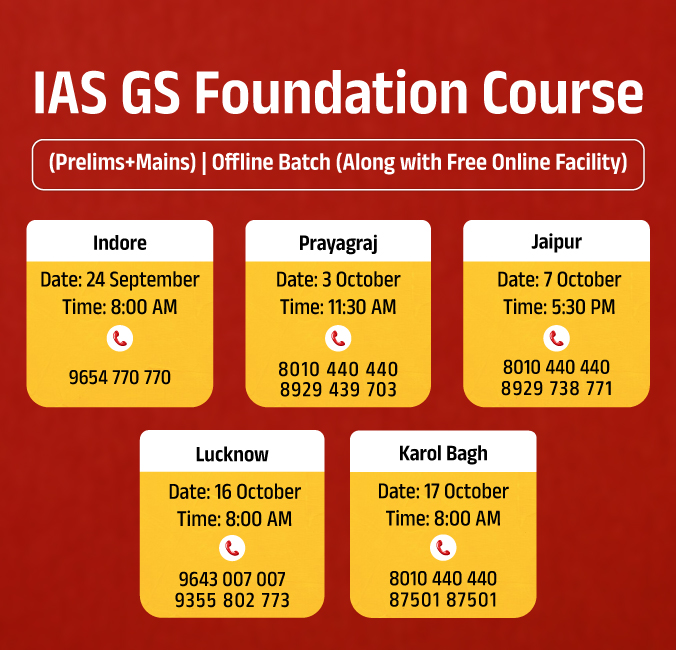
Agriculture
Sustainability Concerns in India’s Agricultural Export Growth
For Prelims: Tea, Sugar, Cropping patterns, National Mission on Sustainable Agriculture, Paramparagat Krishi Vikas Yojana (PKVY), Sub-mission on AgroForestry (SMAF), Rashtriya Krishi Vikas Yojana.
For Mains: Challenges Related to Sustainable Agriculture in India, Government initiatives related to sustainable agriculture.
Why in News?
India's surge in agricultural exports, particularly tea and sugar, has significantly contributed to its economic growth. However, this rapid increase raises critical sustainability concerns regarding environmental impact, resource management, and labour conditions.
Note:
India is one of the world's largest agricultural product exporters, with exports valued at USD 53.1 billion in 2022-2023, up from USD 8.7 billion in 2004-2005, a six-fold increase in less than two decades.
- Exports play a significant role in strengthening India's economy, but the rapid surge poses challenges to the sustainability of the production, processing, and distribution systems.
- Tea: India is the world’s fourth-largest tea exporter, with exports valued at USD 793.78 million in 2022-2023, primarily to destinations like the United Arab Emirates, Russia, Iran, United States, and United Kingdom.
-
Sugar: India, the world's second-largest sugar producer,accounts for about20% of global production.
-
Sugar exports grew from USD 1,177 million in FY 2013-14 to USD 4,600 million in FY 2021-22, marking a 64.90% increase. It exports to 121 countries.
- Economic Impact: Employs about 50 million farmers and an additional 500,000 workers in sugar factories. The industry has an annual turnover of approximately Rs 1 lakh crore, according to NITI Aayog (National Institution for Transforming India).
-
What does Sustainability in Agriculture Mean?
- Economic Sustainability: While exports are economically beneficial, sustainability goes beyond profitability. It involves maintaining long-term productivity without depleting resources.
- Ecological Sustainability: Protecting natural ecosystems, minimising chemical use, and managing water resources effectively are crucial to ensuring that agricultural systems do not harm the environment.
- Social Sustainability: Addressing issues such as labour rights, fair wages, and safe working conditions is essential for creating equitable and sustainable agricultural systems.
- The Lifecycle Approach: Sustainability must be considered throughout the entire lifecycle of a commodity, from pre-sowing to post-harvest stages, not just during production.
What are Sustainability Concerns in India’s Agriculture Sector?
- Sustainability Concerns in Tea Production:
- Human-Wildlife Conflicts: 70% of tea plantations are near forests, resulting in frequent conflicts with wildlife, such as elephants, causing damage to crops and plantations.
- Chemical Use: The widespread use of synthetic pesticides in tea cultivation, including harmful chemicals like Dichlorodiphenyltrichloroethane (DDT) and Endosulfan, poses health risks and increases chemical residue in the final product.
- Labour Issues: With women constituting over half of tea plantation workers, low wages, hazardous working conditions, and inadequate enforcement of labour laws remain significant challenges.
- The Plantations Labour Act, 1951, mandates worker safety, but its provisions are rarely fully enforced.
- Sustainability Concerns in Sugar Industry:
- Water Management: Sugarcane, requiring 1,500 to 2,000 litres of water per kg of sugar, strains India's water resources. Despite covering 25% of the cropped area, sugarcane and paddy consume 60% of irrigation water, limiting availability for other crops.
- Impact on Biodiversity: Expansive sugarcane cultivation in Karnataka and Maharashtra has replaced grasslands and savannahs, causing biodiversity loss and disrupting wildlife habitats.
- Labour and Working Conditions: Sugar industry workers, often trapped in debt cycles, face long working hours in harsh conditions. Rising temperatures further exacerbate their physical and mental well-being.
- Sustainability Concerns India's Agricultural Exports:
- Supply Chain and Logistics: In India, inefficient storage, inadequate rural cold chain infrastructure, and logistical bottlenecks lead to significant post-harvest losses, affecting export quality and increasing costs.
- These challenges also raise sustainability concerns, contributing to food wastage and resource depletion. In 2022, India incurred food losses worth Rs 1.53 lakh crore (USD 18.5 billion).
- Climate Change: Climate change exacerbates sustainability concerns, with extreme events like droughts, floods, and heatwaves disrupting production.
- Soil degradation and water scarcity further reduce productivity, impacting export quantity and quality.
- Supply Chain and Logistics: In India, inefficient storage, inadequate rural cold chain infrastructure, and logistical bottlenecks lead to significant post-harvest losses, affecting export quality and increasing costs.
What Needs to Be Done to Address Sustainability Challenges?
- Sustainability in Tea Industry: Use climate-resilient tea varieties and implement agroforestry practices to mitigate climate risks.
- Ensure farmers receive a fair share of profits through direct market access and premiums for certified products.
- Improved practices to manage human-wildlife interactions around plantations. And stricter monitoring of maximum residue limits for safer tea production is needed.
- Integrate sustainable farming techniques such as precision agriculture, agroforestry, and integrated pest management (IPM) to improve yield and minimise environmental harm.
- Sustainability in Sugar Industry: Transitioning to sustainable irrigation methods like drip irrigation to conserve water.
- Adopting drip irrigation can reduce water usage by 40–50%, making cultivation more resource-efficient.
- Using sugarcane by-products like bagasse (for bioenergy), vinasse (as fertilizer), and cane trash (for biomass or animal feed) reduces waste and improves resource efficiency, thereby promoting a circular economy.
- Sugar mills can transition to biorefineries, where waste products are used for energy generation, making the industry more self-sufficient and reducing reliance on non-renewable energy sources.
- Ensuring better working conditions, fair wages, access to healthcare, education, and social safety nets for farm labourers and mill workers.
- Sustainability in Agricultural Exports:
- Encourage Sustainable Crop Selection: Promote resilient crops like millets, a sustainable choice for boosting domestic use and exports, thriving in harsh conditions, enhancing soil health, and ensuring nutritional security with minimal inputs.
- India's millet exports grew from USD 26.97 million in 2020-21 to USD 75.45 million in 2022-23, underscoring their value as an eco-friendly crop that supports economic growth.
- Dual Demand Base Management: India’s agricultural sector supports a large domestic market and a growing export market, driving economic growth. Balance exports with domestic needs to avoid stressing natural resources or over-reliance on specific commodities.
- Strengthen Supply Chain Dependencies: Address supply chain dependencies impacting sustainability. Foster collaboration and transparency to integrate sustainability goals across the chain.
- Environmental Safeguards: Emphasise environmental conservation to maintain sustainable production levels without exhausting natural resources.
- Implement eco-friendly practices such as reduced water usage, organic farming methods, and soil health preservation.
- Encourage Sustainable Crop Selection: Promote resilient crops like millets, a sustainable choice for boosting domestic use and exports, thriving in harsh conditions, enhancing soil health, and ensuring nutritional security with minimal inputs.
|
Drishti Mains Question: How can India achieve sustainable economic growth in agriculture, considering both the need for export-driven growth and the necessity to conserve natural resources? |
UPSC Civil Services Examination, Previous Year Question (PYQ)
Prelims:
Q. In the context of India, which of the following is/are considered to be practice(s) of eco-friendly agriculture? (2020)
- Crop diversification
- Legume intensification
- Tensiometer use
- Vertical farming
Select the correct answer using the code given below:
(a) 1, 2 and 3 only
(b) 3 only
(c) 4 only
(d) 1, 2, 3 and 4
Ans: (a)
Mains:
Q. India is well endowed with fresh water resources. Critically examine why it still suffers from water scarcity. (2015)


Indian History
Janjatiya Gaurav Divas
For Prelims: Janjatiya Gaurav Divas, Birsa Munda, Santhals, Pradhan Mantri Janjati Adivasi Nyaya Maha Abhiyan, Van Dhan Vikas Kendras, Particularly Vulnerable Tribal Groups, National Overseas Scholarship
For Mains: Tribal Development Initiatives, Tribal Movements and India's Freedom Struggle
Why in News?
Janjatiya Gaurav Divas, celebrated annually on 15th November, honors the invaluable contributions of India’s tribal communities, especially in the nation’s freedom struggle.
- This day marks the birth anniversary of Birsa Munda, a revered tribal leader and freedom fighter. The Prime Minister of India released a commemorative coin and postal stamp in honour of Birsa Munda, paying tribute to his enduring legacy.
What is Janjatiya Gaurav Divas?
- Background: First celebrated in 2021, the day was instituted to recognize the sacrifices of tribal freedom fighters as part of the Azadi Ka Amrit Mahotsav, celebrating 75 years of India's independence.
- Key Highlights of the Janjatiya Gaurav Divas 2024:
- PM-JANMAN: The PM participated in the inauguration of 11,000 houses under the Pradhan Mantri Janjati Adivasi Nyaya Maha Abhiyan (PM-JANMAN).
- 23 Mobile Medical Units (MMUs) were launched to improve healthcare accessibility in remote tribal areas.
- DAJGUA: Additional 30 MMUs inaugurated under the Dharti Aaba Janjatiya Gram Utkarsh Abhiyan (DAJGUA).
- Tribal Entrepreneurship & Education: The PM inaugurated 300 Van Dhan Vikas Kendras (VDVKs) and 10 Eklavya Model Residential Schools(EMRS) for tribal students, while also laying the foundation stone for 25 more EMRS.
- Cultural Preservation: Two Tribal Freedom Fighters' Museums were inaugurated in Chhindwara and Jabalpur, Madhya Pradesh along with two Tribal Research Institutes in Srinagar, Jammu & Kashmir, and Gangtok, Sikkim.
- PM-JANMAN: The PM participated in the inauguration of 11,000 houses under the Pradhan Mantri Janjati Adivasi Nyaya Maha Abhiyan (PM-JANMAN).
Who was Birsa Munda?
- Early Life: Born on 15th November 1875, in the Chota Nagpur Plateau region. He belonged to the Munda tribe, an indigenous community in present-day Jharkhand.
- Spent childhood moving between villages with his parents, experiencing firsthand the challenges faced by tribal communities.
- Founder of the Birsait Sect: Munda became aware of the British colonial rule and missionary efforts to convert tribal populations.
- Birsa Munda established the Birsait sect, which sought to revive tribal identity and resist religious conversion.
- Attracted followers from the Munda and Oraon communities(ethnic group inhabiting the Indian states of Jharkhand, West Bengal, Odisha and Chhattisgarh), uniting them against colonial and missionary control.
- Role in Tribal Mobilization: Spent significant time in Chaibasa, Jharkhand from 1886 to 1890, where he was influenced by the Sardars' agitation.
- Became deeply involved in anti-British and anti-missionary activities, strengthening his resolve to fight for tribal rights.
- Mobilized the tribal community to challenge the British and protect tribal lands and culture.
- In 1899, he launched the Ulgulan (The Great Tumult) movement, which included guerrilla warfare tactics to resist British authority and promote the establishment of a self-governed tribal state known as "Birsa Raj"
- Became deeply involved in anti-British and anti-missionary activities, strengthening his resolve to fight for tribal rights.
- Arrest and Death: Arrested by British police in 1900, with his guerilla group in the Jamkopai forest.
- Died under mysterious circumstances in Ranchi jail on 9th June 1900, at the young age of 25.
- Legacy: Known for compelling colonial authorities to introduce laws protecting tribal land rights.
- The state of Jharkhand was established on his birth anniversary in 2000, honoring his contributions to tribal rights and the freedom movement.
Sardari Agitation
- The Sardari Agitation(1858-90) was a response to the socio-economic exploitation in Chotanagpur, triggered by agrarian discontent over forced labor (beggars) and illegal rent hikes by intermediaries. Led by the Sardars, the movement aimed to resist these oppressive practices.
What are India’s Key Initiatives Supporting Tribal Development?
- Financial and Social Initiatives:
- Financial Commitments: The Union Budget allocated Rs 13,000 crore to the Ministry of Tribal Affairs in 2024-25, reflecting a 73.6% increase from 2023-24.
- DAJGUA: Launched with a Rs 79,156 crore outlay to address social infrastructure gaps across tribal areas, benefiting over 5.38 crore people in 63,843 villages.
- PM-JANMAN: Initiated in 2023 to support Particularly Vulnerable Tribal Groups (PVTGs) with targeted schemes, including healthcare, financial inclusion, and community support.
- Pradhan Mantri Adi Adarsh Gram Yojana: PMAAGY aims to provide basic infrastructure in villages with a significant tribal population.
- Around 36500 villages having 50% tribal population and 500 Scheduled Tribes (STs) have been identified for providing basic infrastructure facilities, including villages in the Aspirational Districts identified by NITI Aayog (National Institution for Transforming India).
- Education:
- EMRS: Established to offer quality education to Scheduled Tribes students in remote areas, helping bridge educational gaps.
- Adivasi Shiksha Rinn Yojana (ASRY): Offers soft loans for tribal students pursuing higher education.
- Scholarships for Tribal Students: Scholarships include Pre-Matric and Post-Matric Scholarships, National Overseas Scholarship for international education, and National Fellowship for financial support in higher education.
- Income Generation Schemes: The Term Loan Scheme offers up to 90% business loans, Adivasi Mahila Sashaktikaran Yojna provides concessional loans for tribal women to support entrepreneurship, and Micro Credit Scheme supports tribal groups with loans up to Rs 5 lakh.
- Health and Welfare Initiatives:
|
Drishti Mains Question: Tribal communities in India have played a pivotal role in the country’s freedom struggle. Discuss the contributions of various tribal groups in the Indian independence movement. |
UPSC Civil Services Examination, Previous Year Question (PYQ)
Prelims
Q.1 Consider the following statements about Particularly Vulnerable Tribal Groups (PVTGs) in India: (2019)
- PVTGs reside in 18 States and one Union Territory.
- A stagnant or declining population is one of the criteria for determining PVTG status.
- There are 95 PVTGs officially notified in the country so far.
- Irular and Konda Reddi tribes are included in the list of PVTGs.
Which of the statements given above are correct?
(a) 1, 2 and 3
(b) 2, 3 and 4
(c) 1, 2 and 4
(d) 1, 3 and 4
Ans: C
Q.2 Consider the following pairs: (2013)
| Tribe | State | |
| 1. | Limboo (Limbu) | Sikkim |
| 2. | Karbi | Himachal Pradesh |
| 3. | Dongaria Kondh | Odisha |
| 4. | Bonda | Tamil Nadu |
Which of the above pairs are correctly matched?
(a) 1 and 3 only
(b) 2 and 4 only
(c) 1, 3 and 4 only
(d) 1, 2, 3 and 4
Ans: (a)
Mains:
Q. What are the two major legal initiatives by the State since Independence addressing discrimination against Scheduled Tribes (STs)? (2017)
Q. Why are the tribals in India referred to as ‘the Scheduled Tribes’? Indicate the major provisions enshrined in the Constitution of India for their upliftment. (2016)


Geography
Dinosaurs and UNESCO Global Geoparks Tag
For Prelims: Geological Survey of India, UNESCO Global Geoparks, Cretaceous period, Mongolian Gobi Desert, Geo Heritage Sites, Landforms, Mountain Ranges, Glacial Features, Mesozoic Era, Pangaea, Yucatan Peninsula.
For Mains: India’s geo heritage sites and UNESCO Global Geoparks tag.
Why in News?
The Geological Survey of India wants Dinosaur Fossil Park and Museum in Raiyoli village in Gujarat to get a UNESCO Global Geoparks tag.
What are the Key Points About Gujarat’s Dinosaur Fossil Park and Museum?
- Geological Importance: In the early 1980s, geologists discovered large dinosaur bones and fossilised eggs.
- The bones belong to the Rajasaurus Narmadensis and Rahiolisaurus Gujaratensis, carnivorous dinosaurs from the Late Cretaceous period (~67 million years ago).
- Global Position: It is one of the largest dinosaur egg hatcheries in the world, ranking third globally after Aix-en-Provence (France) and the Mongolian Gobi Desert.
- International Interest: The site gained international attention in the 1990s when a team of 50 palaeontologists, visited to study the dinosaur eggs.
What is the History of Dinosaurs in India?
- Early Dinosaur Discoveries: Asia's first dinosaur bones were discovered in India in 1828 in Jabalpur, Madhya Pradesh, by Captain William Henry Sleeman which were later named Titanosaurus indicus in 1877.
- Titanosaurus, a large herbivorous dinosaur that lived during the Late Cretaceous period.
- Dinosaur Fossils: Madhya Pradesh, Maharashtra, and Gujarat, are key fossil-rich regions that have yielded many dinosaur skeletons and eggs.
- Several important species have been discovered in this region are Barapasaurus (herbivorous), Isisaurus (herbivorous), Indosuchus (carnivorous), and Rajasaurus Narmadensis (carnivorous).
- Dinosaur Hatcheries: India is believed to be one of the largest dinosaur hatcheries in the world, with major nesting sites discovered in regions like Jabalpur (MP), Balasinor (GJ), and Dhar District (MP).
What are UNESCO Global Geoparks (Geo Heritage Sites)?
- About: UNESCO Global Geoparks are unified geographical areas with internationally significant geological sites, managed with a holistic approach to protection, education, and sustainable development.
- Geo Heritage Sites are locations that have geological significance due to their unique rock formations, fossils, mineral deposits, or landforms.
- Designation Process: UNESCO Global Geoparks are designated for four years, after which they undergo revalidation.
- Green Card: Awarded if the area continues to meet the criteria.
- Yellow Card: Issued if the area no longer meets the criteria, allowing two years for improvement.
- Red Card: Issued if the area fails to meet the criteria within two years after a yellow card, leading to loss of status.
- Global Presence: As of now, there are a total of 213 UNESCO Global Geoparks across 48 countries but India has no Global Geoparks. E.g., Dali-Cangshan UNESCO Global Geopark in China.
- Diversity: Geo heritage sites can include volcanic formations, fossil-rich areas, caves, mountain ranges, glacial features, and mineral-rich regions.
What are Key Facts About Dinosaurs?
- About: Dinosaurs are prehistoric reptiles that have lived on Earth from about 245 million years ago to the present.
- Modern birds are considered a type of dinosaur due to sharing a common ancestor with non-avian dinosaurs.
- Size: Some dinosaurs were massive, such as Argentinosaurus, weighing up to 110 tons.
- The smallest were tiny species, such as the bee hummingbird, which is still a bird descendant of dinosaurs.
- Classification: Dinosaurs are classified into three major groups.
- Ornithischia: Beaked plant-eaters, including Stegosaurus and Triceratops.
- Sauropodomorpha: Long-necked, large-bodied herbivores like Diplodocus.
- Theropoda: Carnivorous dinosaurs like Tyrannosaurus rex and Velociraptor, including the ancestors of modern birds.
- Period: Most dinosaurs lived during the Mesozoic Era (245 to 66 million years ago), which is divided into three periods.
- Triassic (252-201 million years ago): Reptiles evolved into dinosaurs on the supercontinent Pangaea.
- Jurassic (201-145 million years ago): Earth cooled, leading to more plants and dinosaurs, including Brachiosaurus.
- Cretaceous (145-66 million years ago): More continents formed, and dinosaur diversity increased, including the Tyrannosaurus Rex and Velociraptor.
- Diet and Movement: Meat-eaters walked on two legs and hunted alone or in groups whereas plant-eaters walked on two or four legs and grazed on plants.
- Distinctive Feature: The key feature that distinguishes dinosaurs from other reptiles is a hole in the hip socket, allowing them to walk upright.
- Pterosaurs (flying reptiles) and plesiosaurs (ocean-dwelling reptiles) do not have the hip socket feature and are not classified as dinosaurs.
- Extinction: Dinosaurs went extinct around 66 million years ago after a massive asteroid impact during the Cretaceous period (145 million to 66 million years ago).
- The asteroid collision with Earth created an impact crater over 110 miles (180 km) wide in the Yucatan Peninsula, now located in Mexico.
Conclusion
Gujarat’s Dinosaur Fossil Park, a globally significant site, showcases crucial dinosaur fossils and eggs, highlighting India’s rich paleontological heritage. With international interest, it holds potential for UNESCO Global Geopark designation, contributing to geo-tourism and local development, while preserving Earth's geological and cultural history.
|
Drishti Mains Question: Evaluate the geological and paleontological importance of the dinosaur fossil found in India and its potential impact on geo-tourism. |
UPSC Civil Services Examination, Previous Year Questions (PYQs)
Prelims
Q. The term “sixth mass extinction/sixth extinction” is often mentioned in the news in the context of the discussion of (2018)
(a) Widespread monoculture practices in agriculture and large-scale commercial farming with indiscriminate use of chemicals in many parts of the world that may result in the loss of good native ecosystems.
(b) Fears of a possible collision of a meteorite with the Earth in the near future in the manner it
happened 65 million years ago that caused the mass extinction of many species including those of dinosaurs.
(c) Large scale cultivation of genetically modified crops in many parts of the world and promoting their cultivation in other parts of the world which may cause the disappearance of good native crop plants and the loss of food biodiversity.
(d) Mankind’s over-exploitation/misuse of natural resources, fragmentation/loss of natural habitats, destruction of ecosystems, pollution and global climate change.
Ans: (d)
Q. From the point of view of the evolution of living organisms, which one of the following is the correct sequence of evolution? (2010)
(a) Otter – Tortoise – Shark
(b) Shark – Tortoise – Otter
(c) Tortoise – Shark – Otter
(d) Shark – Otter – Tortoise
Ans: (b)


Important Facts For Prelims
World Bank Enhances Lending Capacity
Why in News?
Recently, the World Bank has increased its lending capacity by 50% through balance sheet optimisation, aiming to provide USD 150 billion over the next decade.
- This expansion has a strong focus on green projects, supporting climate action and the Sustainable Development Goals (SDGs).
- With current annual lending of USD 5 billion, India is one of the World Bank’s largest clients, and will receive a major share of the increased funding, focusing on climate resilience, rural development, energy, healthcare, and digital education.
What are Recent Financial Reforms in the World Bank?
- Reduced Borrowing Costs for Middle-Income Countries: The World Bank has waived commitment fees on loan balances for middle-income countries (like India) for four years, reducing borrowing costs by approximately 1% over this period.
- Commitment fees are charged by the World Bank on undisbursed loan amounts to ensure borrowers use the funds within a set period.
- Reducing commitment fees make financing more affordable for these countries.
- Commitment fees are charged by the World Bank on undisbursed loan amounts to ensure borrowers use the funds within a set period.
- Internal Reforms and Efficiency Gains: Recent World Bank meetings focused on internal reforms to improve efficiency, collaboration, and increase private sector financing.
- These reforms are guided by recommendations from the G20-backed International Expert Group (IEG).
- IEG Report and MDB Funding Goals: The IEG report recommended that Multilateral Development Banks (MDBs), including the World Bank, should increase annual funding by USD 3 trillion by 2030 to effectively support climate action and other SDGs.
- In September 2024, MDBs reported that their global climate finance reached a record high of USD 125 billion in 2023.
- New Lending Strategies: To expand its lending capacity, the World Bank is lowering its equity-to-loan ratio and using hybrid capital models. These strategies will allow the Bank to increase its loans without requiring additional capital.
What is the Role and Structure of the World Bank?
- About the World Bank:
- The World Bank is a global development cooperative comprising 189 member countries.
- These countries, or shareholders, are governed by a Board of Governors, typically made up of finance or development ministers.
- The Board meets annually to set policy and oversee the institution’s work in global development.
- Mission and Functions:
- The World Bank aims to reduce poverty and promote shared prosperity.
- It provides financial products, technical assistance, and policy advice to help countries address complex development challenges.
- The World Bank collaborates with multilateral institutions, civil society, private sector players, and foundations to maximise impact.
- The World Bank has funded over 15,000 projects in areas such as education, health, infrastructure, and environmental sustainability.
- Some of the Projects funded by the Word Bank in India are India Energy Efficiency Scale-up Program, SANKALP, Raising and Accelerating MSME Performance (RAMP), Eastern Dedicated Freight Corridor, and Mumbai Urban Transport Projects etc.
- Key Institutions within the World Bank Group:
- International Bank for Reconstruction and Development (IBRD): IBRD offers loans, guarantees, and policy advice to middle-income and creditworthy low-income countries with focus on poverty reduction, sustainable growth, and infrastructure development.
- Middle-income countries (MICs) account for over 60% of IBRD’s portfolio, serving as key drivers of global growth while housing the majority of the world’s poor.
- International Development Association (IDA): IDA provides concessional loans and grants to the world’s poorest countries, with terms that carry little or no interest.
- IDA supports projects in rural development, education, health, and post-conflict recovery.
- IDA’s financial products are allocated based on a country’s income level and its success in managing past projects.
- IDA financing is highly concessional, offering zero-to-low interest loans or grants to the poorest countries.
- International Finance Corporation (IFC): IFC promotes private sector investment in developing countries by providing financing, advisory services, and risk mitigation.
- Multilateral Investment Guarantee Agency (MIGA): MIGA provides political risk insurance and guarantees to encourage foreign investment in developing economies, reducing the risk of loss from political instability.
- Political risk insurance is a tool for businesses to mitigate and manage risks arising from the adverse actions, or inactions, of governments.
- International Centre for Settlement of Investment Disputes (ICSID): ICSID helps resolve investment disputes between investors and states, providing a legal framework for the peaceful settlement of conflicts.
- International Bank for Reconstruction and Development (IBRD): IBRD offers loans, guarantees, and policy advice to middle-income and creditworthy low-income countries with focus on poverty reduction, sustainable growth, and infrastructure development.
Note
- India is a member of four of the five institutions in the World Bank Group but is not a member of the International Centre for Settlement of Investment Disputes (ICSID), an international arbitration institution.
UPSC Civil Services Examination, Previous Year Question
Q. With reference to ‘IFC Masala Bonds’, sometimes seen in the news, which of the statements given below is/are correct? (2016)
- The International Finance Corporation, which offers these bonds, is an arm of the World Bank.
- They are the rupee-denominated bonds and are a source of debt financing for the public and private sector.
Select the correct answer using the code given below:
(a) 1 only
(b) 2 only
(c) Both 1 and 2
(d) Neither 1 nor 2
Ans: (c)


Important Facts For Prelims
Dicliptera Polymorpha
Why in News?
Recently, Scientists from the Agharkar Research Institute (ARI), an autonomous institute under the Department of Science & Technology (DST), have discovered a new species of Dicliptera, named Dicliptera Polymorpha in the Northern Western Ghats of India.
What are the Key Findings Related to Species?
- Unique Traits of Dicliptera Polymorpha:
- Fire Resilience: It can survive summer droughts and adapt to grassland fires.
- Dual Blooming Pattern: Blooms post-monsoon (November–April) and again in May–June after fires.
- Morphological Distinction: It has inflorescence flower structures that are uncommon in Indian species but similar to those found in African species.
- Adaptations to Harsh Conditions:
- Thrives on open grassland slopes in the Western Ghats.
- Woody rootstocks produce dwarf flowering shoots during the second flowering phase.
- Threats to Species:
- Human-Induced Fires: While fires can help the species bloom again, too many or poorly controlled fires could harm its habitat.
- Habitat Overuse: Overgrazing and land-use changes threaten grassland biodiversity.
What are Key Facts About the Western Ghats?
- About:
- The Western Ghats, also known as the Sahyadri Hills, are well known for their rich and unique assemblage of flora and fauna.
- The range is called Sahyadri in northern Maharashtra, Nilgiri hills in Karnataka and Tamil Nadu and Anaimalai hills and Cardamom hills in Kerala.
- It is recognized as a UNESCO World Heritage Site.
- Western Ghats is home to India’s two biosphere reserves, 13 National parks, several wildlife sanctuaries and many Reserve Forests.
- It comprised the evergreen forests of Nagarahole, deciduous forests of Bandipur National Park and Nugu in Karnataka and adjoining regions of Wayanad and Mudumalai National Park in the states of Kerala and Tamil Nadu.
- Global Biodiversity Hotspot:
- One of India's four recognized biodiversity hotspots, it is home to many endemic and yet-to-be-discovered species.
- Conservation Efforts for Western Ghats:
- Gadgil Committee (2011):
- It is also known as the Western Ghats Ecology Expert Panel (WGEEP).
- The committee recommended that all of the Western Ghats be declared as the Ecological Sensitive Areas (ESA) with only limited development allowed in graded zones.
- Kasturirangan Committee (2013): It sought to balance the development and environment protection in contrast to the system proposed by the Gadgil report.
- The Kasturirangan committee recommended that instead of the total area of Western Ghats, only 37% of the total area should be brought under ESA and a complete ban on mining, quarrying and sand mining be imposed in ESA.
- Gadgil Committee (2011):
UPSC Civil Services Examination, Previous Year Questions (PYQs)
Prelims:
Q. Recently, our scientists have discovered a new and distinct species of banana plant which attains a height of about 11 meters and has orange coloured fruit pulp. In which part of India has it been discovered? (2016)
(a) Andaman Islands
(b) Anaimalai Forests
(c) Maikala Hills
(d) Tropical rain forests of northeast
Ans: (a)


Rapid Fire
Sea Ranching Initiative to Boost Marine Fisheries
The Kerala Fisheries Department launched a sea ranching project off Thiruvananthapuram, with 10 lakh pompano and cobia fingerlings (marine fish species) to be released at 10 coastal locations to replenish marine fishery resources and support sustainable fishing.
- Sea ranching, or ocean ranching, is a type of fish farming where juvenile fish are released into the ocean to grow naturally without protection or assistance before being harvested.
- The project follows the artificial reef initiative under the Pradhan Mantri Matsya Sampada Yojana (PMMSY), aimed at enhancing marine biodiversity.
- Artificial reefs deployed at 42 locations in Thiruvananthapuram have attracted various fish species like tuna, trevally, and mackerel.
- Future phases of the project propose expanding artificial reefs to 96 villages in Kerala.
- PMMSY was launched by the Department of Fisheries; Ministry of Fisheries, Animal Husbandry, and Dairying; to bring about ecologically healthy, economically viable, and socially inclusive development of the fisheries sector of India.
Read more: Pradhan Mantri Matsya Sampada Yojana


Rapid Fire
Indian Military Heritage Festival and Project Shaurya Gatha
Recently, Chief of Defence Staff (CDS) General Anil Chauhan inaugurated the 2nd Indian Military Heritage Festival (IMHF) in New Delhi. The event also launched Project Shaurya Gatha, focusing on conserving and promoting India's military heritage.
- IMHF aims to enhance awareness of India's military history, strategic culture, and self-reliance in defence.
- Participants include think tanks, public/private sector entities, non-profits, academicians, research scholars, National Cadet Corps (NCC), and youth organisations focusing on India’s national security, foreign policy, military history, and heritage.
- Project Shaurya Gatha, in partnership with the Department of Military Affairs and the United Service Institution (USI) of India, seeks to preserve and promote military heritage through education and tourism initiatives.
- USI is a national security and defense services think tank based in New Delhi, India.
- CDS: Its creation was recommended in 2001 by a Group of Ministers (GoM) that was tasked with studying the Kargil Review Committee (1999) report.
- General Bipin Rawat was the first CDS in the country and was appointed in 2019.
Read more: Saksham Bharat: Project Udbhav | Indian Army Exploring India's Military Heritage


Rapid Fire
Booker Prize 2024
Recently, British author Samantha Harvey won the Booker Prize 2024 for her novel Orbital.
- Orbital is the first space book to win the Booker Prize.
- It explores Earth through the experiences of six astronauts aboard the International Space Station (ISS), witnessing 16 sunrises and sunsets daily.
- It is the second-shortest novel in Booker Prize history, with the shortest being Offshore by Penelope Fitzgerald (132 pages).
- Harvey is the first woman to win the Booker Prize since Margaret Atwood in 2019.
- The Booker Prize: Established in the UK in 1969.
- Awarded annually to the best sustained work of fiction.
- Initially awarded to writers from Commonwealth nations. Now open to writers worldwide, regardless of origin.
- Must be written in English and published in the UK or Ireland.
Read More: International Booker Prize 2024


Rapid Fire
Partnerships for Accelerated Innovation and Research
The Anusandhan National Research Foundation (ANRF) has launched the Partnerships for Accelerated Innovation and Research (PAIR) Program to enhance research capabilities in Indian universities.
- Objective: PAIR aims to enhance university research by using a hub-and-spoke model, pairing top-tier universities (hubs) with emerging institutions (spokes) for mentorship and collaboration.
- Hub institutions, including top 25 National Institutional Ranking Framework (NIRF)-ranked universities and top 50 Institutions of National Importance will mentor spoken institutions(central and state public universities) with limited research infrastructure.
- Aligned with NEP 2020: Aligned with National Education Policy (NEP) 2020, PAIR bridges research gaps, promotes regional diversity, and fosters innovation across India's universities.
- ANRF: It has been established with ANRF 2023 Act, it acts as an apex body to provide high-level strategic direction of scientific research in the country as per recommendations of the NEP.
- With the establishment of ANRF, the Science and Engineering Research Board (SERB) established by an act of Parliament in 2008 has been subsumed into ANRF.
Read more: India's Research and Development Landscape



